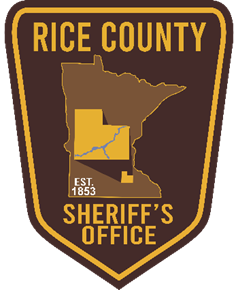Carbon monoxide (CO) is an odorless, tasteless, invisible gas. Because you can’t see, taste or smell it, carbon monoxide can kill you before you know it’s there. Everyone is at risk for carbon monoxide poisoning. Indicators of possible carbon monoxide poisoning include symptoms similar to the flu, such as headaches, fatigue, nausea, dizzy spells, confusion and irritability.
Carbon monoxide is a by-product of combustion, present whenever fuel is burned. In the home, sources include ranges, ovens, clothes dryers, furnaces, fireplaces, grills, space heaters, vehicles, and water heaters. Most homes will have some level of carbon monoxide from open flames, such as from ovens and ranges. If a home is vented properly and is free from appliance malfunctions, air pressure fluctuations or airway blockages, carbon monoxide will most likely be safely vented to the outside.
The Consumer Product Safety Commission (CPSC) recommends installing at least one carbon monoxide detector per household, near the sleeping area. A second detector near the home’s heat source provides extra protection. Choose an Underwriters Laboratories (UL) listed detector that sounds an audible alarm. Battery powered and electrical units are both available.
Mitigation
- Gas or oil furnaces are frequently the source of carbon monoxide leaks. Check all connections to flue pipes and venting systems for cracks, gaps, rust, corrosion or debris. Check the filters and filtering systems for dirt and blockages. Check the combustion chamber and heat exchanger for cracks, holes, metal fatigue or corrosion.
- Check furnace pilot lights, flame, burners, and ignition systems. A predominately yellow, flat, lazy-looking flame in a natural gas furnace indicates fuel is not burning efficiently, releasing higher than usual levels of carbon monoxide. Oil furnaces with a similar problem produce an ‘oil’ odor, but remember you can’t smell, see or taste carbon monoxide.
- Inspect fireplaces, chimneys, and venting systems must be carefully checked for blockages caused by debris, animal nests, cracks, holes or cave-ins. A blocked chimney or venting system can force dangerous gases back into your home.
- Venting and fan systems on all fuel burning appliances must be inspected for proper installation to assure carbon monoxide is vented out rather than in. Don’t forget gas water heaters, clothes dryers, space heaters or wood burning stoves.
- Stove pilot lights in a closed-up home can be a source of carbon monoxide build-up if not operating properly because they are not vented to the outside. Check to be sure they are operating properly.
- Never burn charcoal inside no matter how much you want to recapture summer and never use your gas stove as a heater. Keep the oven door closed and use it for cooking only.
- Never leave a car running in an attached garage even if the garage door is open. Carbon monoxide from a running vehicle inside an attached garage can get inside the house
Preparedness
Know the warning signs of carbon monoxide poisoning:
- Low Concentrations – fatigue in healthy people and chest pain in people with heart disease.
- Higher concentrations – impaired vision and coordination; headaches; dizziness; confusion; nausea. Can cause flu-like symptoms that clear up after leaving home.
- Very high concentrations – Acute effects are due to the formation of carboxyhemoglobin in the blood, which inhibits oxygen intake and can be fatal.
Response
Don’t ignore the alarm! It is intended to go off before you are experiencing symptoms. Evacuate everyone from your home immediately, leaving the door open for ventilation on your way out. Notify the fire service from a neighbor’s home. Let the fire service know if anyone is experiencing any of the symptoms of carbon monoxide poisoning.
Pollution and atmospheric conditions in some areas cause low levels of CO to be present for long periods of time. In fact, these “background” conditions may increase the COHb level to over 10%, causing CO detectors to alarm even though conditions inside the home are not truly hazardous. Treat all CO detector alarms as real, until it has been verified that there is no threat from equipment inside the dwelling.
Recovery
Do not return to the house until it has been checked.
